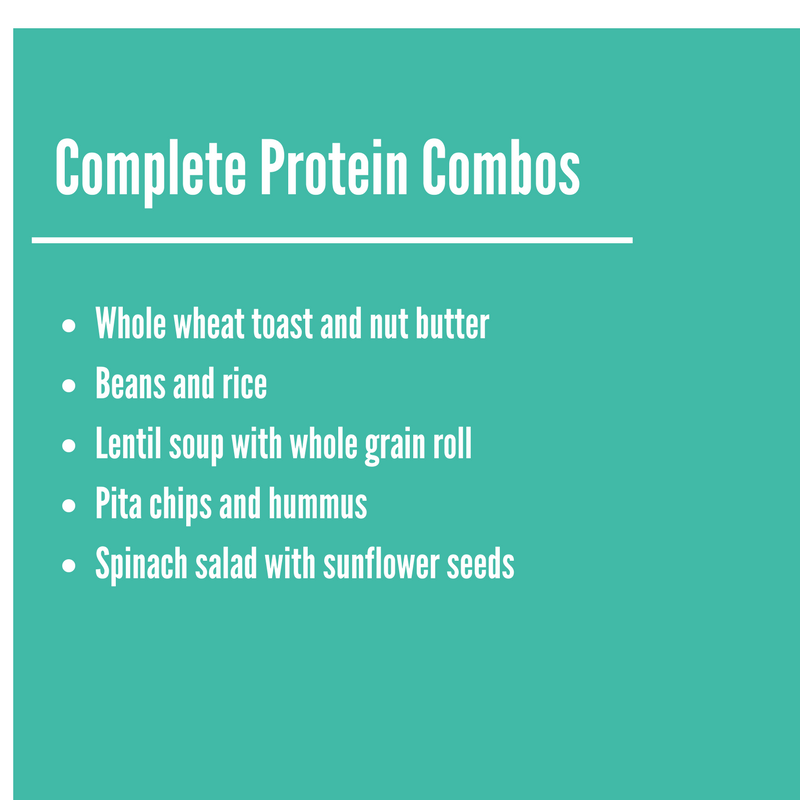How to Eat Complete Proteins in Vegetarian and Vegan Diets

Thinking about going vegan or vegetarian? Good for you! A healthy, well-planned diet that includes less or no animal products can be beneficial to your health (and budget)!
Eating more veggies and fruits is never a bad idea, just be sure to incorporate enough complete proteins. Without complete proteins in your diet, you may feel sluggish and lose muscle mass. Fortunately, a little menu planning can help you include enough complete proteins in your diet.
What is a complete protein?
Protein is the macronutrient in your body that builds and repairs muscle tissue. It’s essential for digestion, metabolic function and creating infection-fighting antibodies. Your brain, heart, liver and muscles consist of protein. In short, a healthy body and mind really need it.
So, what makes a protein complete? It depends on whether it has all 22 amino acids. Amino acids are the basic building blocks of protein. Our bodies naturally produce 13 amino acids, but the nine others need to be sourced elsewhere.
“A protein is considered ‘complete’ when it has nine essential amino acids in somewhat equal amounts,” says Meagan Ballard, a registered dietitian at INTEGRIS Health. “Essential amino acids are those that cannot be made by the body and therefore must be eaten in our diet.”
Animal proteins are the richest food source for complete proteins, but there are also options for vegetarians and vegans. Of course, there is no right or wrong way to consume complete proteins—whether you’re a meat-lover or vegan—as long as you are eating enough complete proteins.
Non-meat complete proteins
- Fish
- Dairy (like milk, yogurt, and cheese)
- Eggs
Plant-based complete proteins
- Quinoa
- Soy
- Buckwheat
- Hemp
- Chia seed
- Spirulina
- Tempeh
- Amaranth
What is an incomplete protein?
Your body creates 13 of the 22 amino acids on its own. These are the non-essential amino acids. A complete protein has the non-essential amino acids plus the nine essential amino acids that need to be eaten. An incomplete protein has only some of the nine essential amino acids.
Combining incomplete proteins
It’s easy to combine two incomplete protein sources to get the nutrients you need.
“You can combine foods to make what is called complimentary proteins. Two incomplete proteins can be combined to obtain all the essential amino acids,” Ballard says.
For example, brown rice has several of the essential amino acids, but not all nine. Beans, lentils and chickpeas have essential amino acids that brown rice lacks. Simply pairing rice and beans will give you a vegan-friendly meal with complete proteins.
Here are several tasty combos that will please your palate and diet restrictions.
- Whole grain pita bread and hummus
- Peanut butter on whole grain toast
- Spinach salad with nut and seed toppings
- Steel-cut oatmeal with pumpkin seeds or peanut butter
- Lentil soup with whole grain slice of bread
You don’t have to eat complete proteins within the same meal, just make sure you consume a combination over the course of the day. For example, you can eat a whole grain at breakfast and then snack on peanut butter later that afternoon. There’s more variety in restricted diets than it seems. Go to Pinterest and bloggers for thousands of recipes and meal prep tips.
Worried about dining out? In the Oklahoma City metro area, check out dining options like the Loaded Bowl, Picasso Café, Green Goodies and the Red Cup for delicious vegan and vegetarian options.
Before you make a drastic change in diet, meet with a certified dietitian to make sure you’re meeting all your nutritional needs. Remember, it’s important to consume complete proteins throughout your day, whether you’re a meat-eater, vegetarian or vegan.

